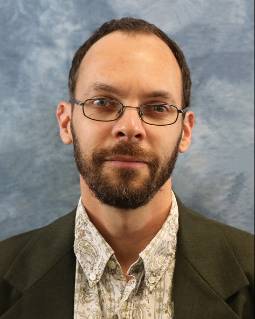Molinaroli College of Engineering and Computing
Faculty and Staff
Andrew Sabalowsky
| Title: | Instructor |
| Department: | Mechanical Engineering Molinaroli College of Engineering and Computing |
| Email: | sabalows@mailbox.sc.edu |
| Phone: | 803-777-9559 |
| Fax: | 803-777-0106 |
| Resources: | Curriculum Vitae |

Research
Dr. Sabalowsky’s prior research expertise are in anaerobic processes, specifically as they relate to bioremediation of hazardous xenobiotic molecules and biofuel production, such has methane and hydrogen production, microbial fuel cells, and fermentable products. More recently, his interests are in renewable energy technology centered on fluid flow, such as wave attenuation, micro wind turbines, and solar chimneys.
Education
- Ph.D., Civil Engineering (Environmental Eng. Concentration). (January 2009)
Oregon State University, Corvallis, OR - M.S. Environmental Engineering (May 1999)
Virginia Polytechnic Institute and State University, Blacksburg, VA - B.S. Aerospace Engineering, Minor Philosophy, Magna Cum Laude (May 1994)
Virginia Polytechnic Institute and State University, Blacksburg, VA
Teaching and Consulting Experience
- Instructor (August 2016-Present): University of South Carolina, Columbia, SC
- Assistant Professor (August 2012-July 2016): Benedict College, Columbia, SC
- Postdoctoral Research Associate, (January 2009-January 2012) Center for Biofilm Engineering, Montana State University, Bozeman, MT
- Environmental Engineering E.I.T. (October 1999 to October 2001), EGR & Associates, Eugene, OR
- Environmental Engineering E.I.T. (February 1998 to October 1999), Environmental Engineering, Inc., Blacksburg, VA
Selected Publications
- Sabalowsky, AR and L Semprini. 2010. Trichloroethene and cis-1,2-dichloroethene concentration-dependent toxicity model simulates anaerobic dechlorination at high concentrations: I. batch-fed reactors. Biotechnology and Bioengineering, 107(3):529–539.
- Sabalowsky, AR and L Semprini. 2010. Trichloroethene and cis-1,2-dichloroethene concentration-dependent toxicity model simulates anaerobic dechlorination at high concentrations: II. Continuous flow and attached growth reactors. Biotechnology and Bioengineering, 107(3):540–549.
- Sabalowsky, AR. 2010. Spotlight: Modeling solvent toxicity with concentration-dependent increased cell decay. Biotechnology and Bioengineering, 107(3):fmv
- Behrens, S., MF Azizian, PJ McMurdie, A Sabalowsky, ME Dolan, L Semprini, and AM Spormann. 2008. Monitoring Abundance and Expression of Dehalococcoides sp. Chloroethene Reductive Dehalogenases in a PCE-Dechlorinating Continuous Flow Column. Applied and Environmental Microbiology, 74:5695-5703.
- Azizian, MF, S Behrens, A Sabalowsky, ME Dolan, AM Spormann, and L Semprini. 2008. Continuous-flow column study of reductive dehalogenation of PCE upon bioaugmentation with the Evanite enrichment culture. Journal of Contaminant Hydrology, 100:11-21.